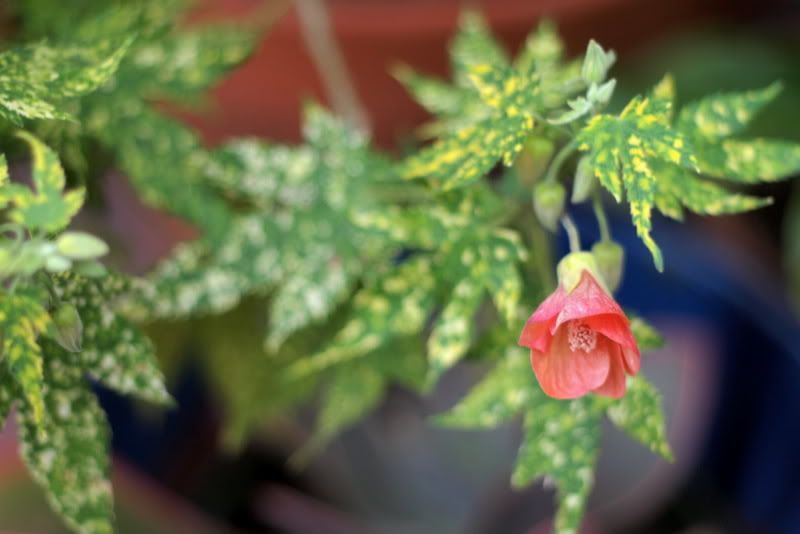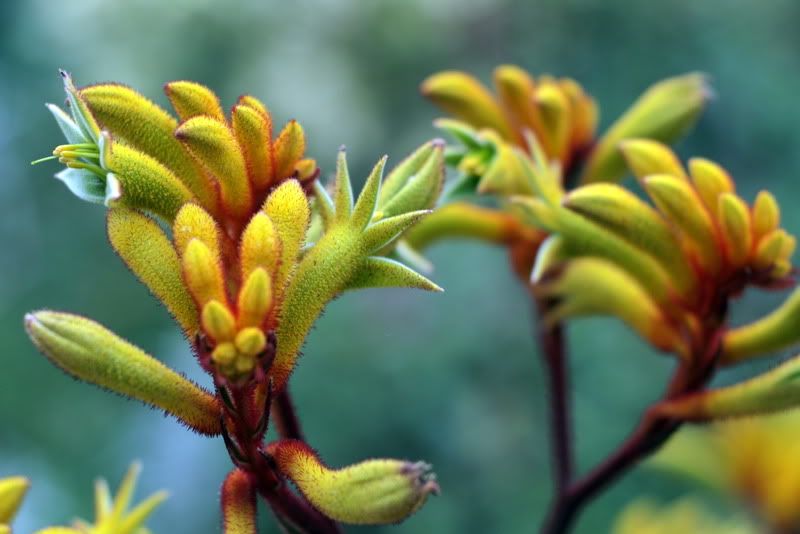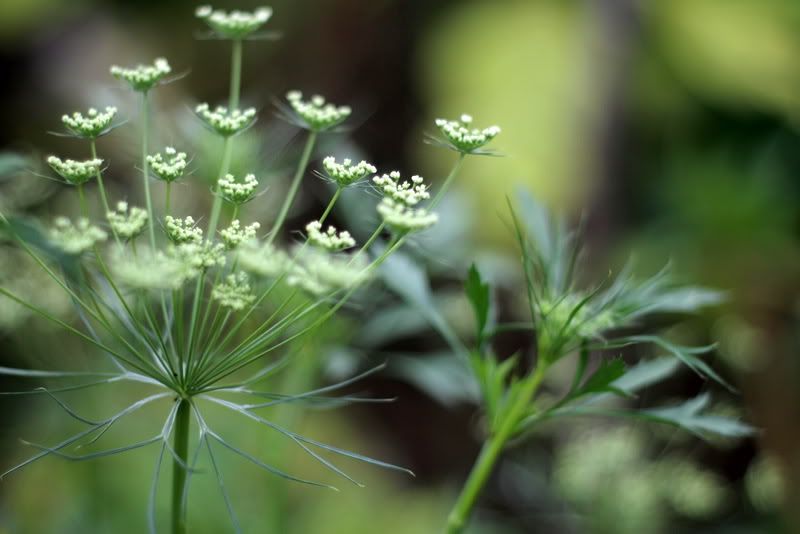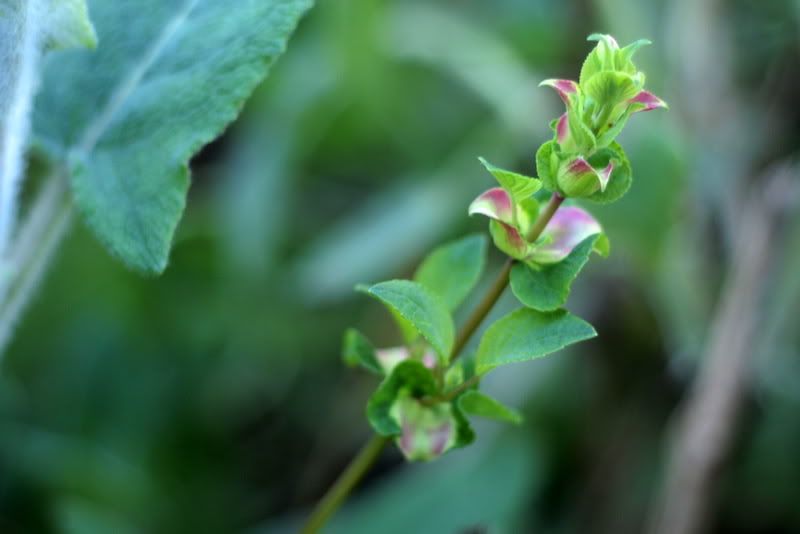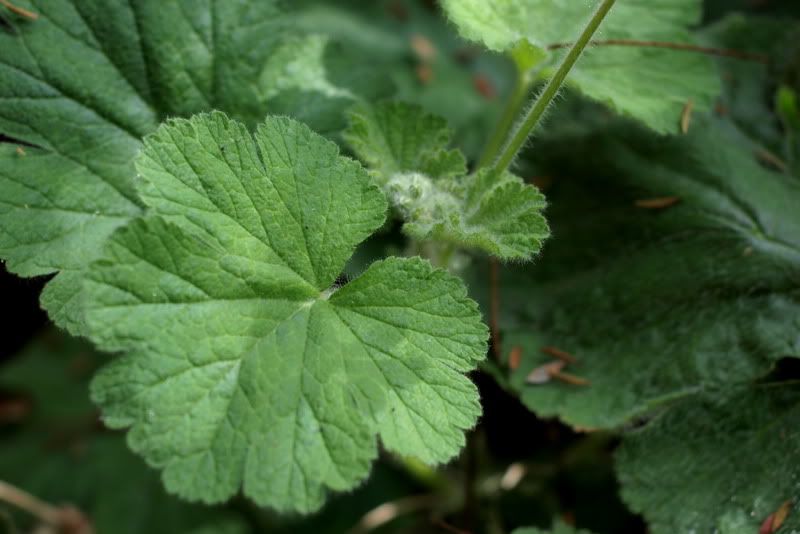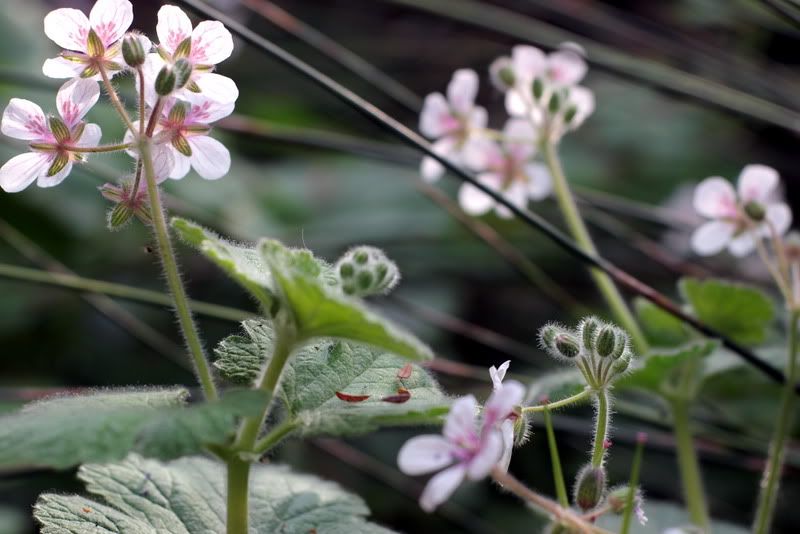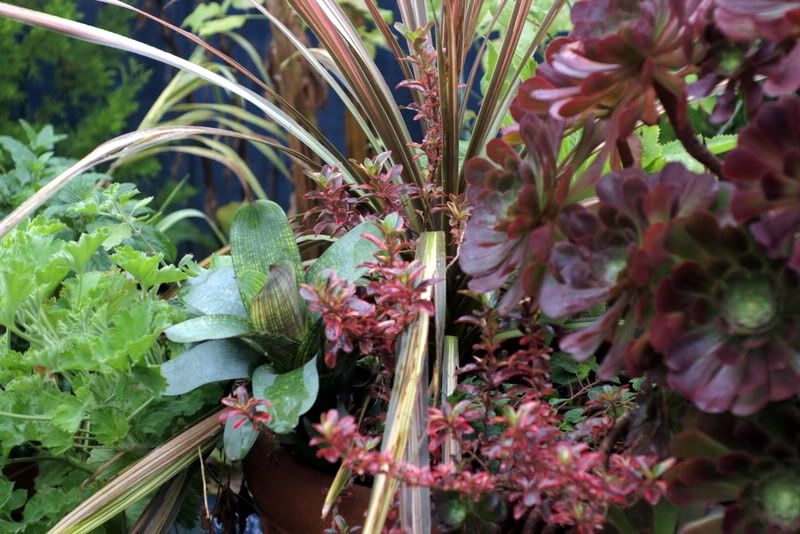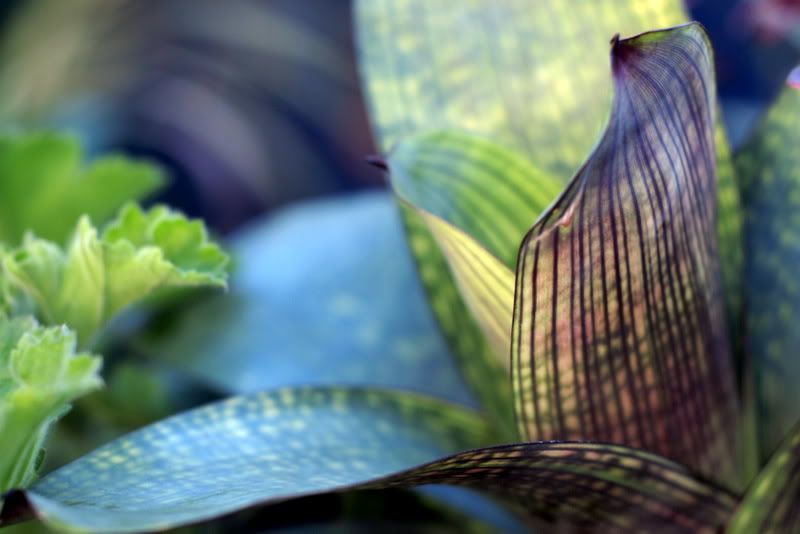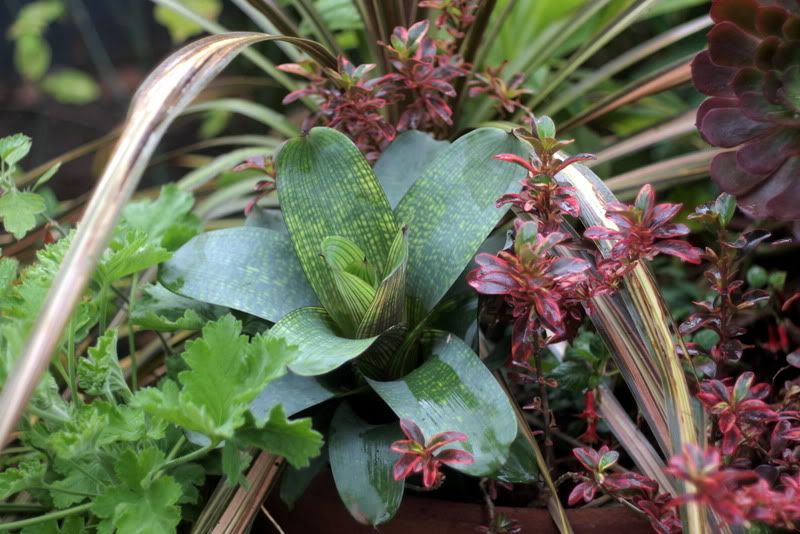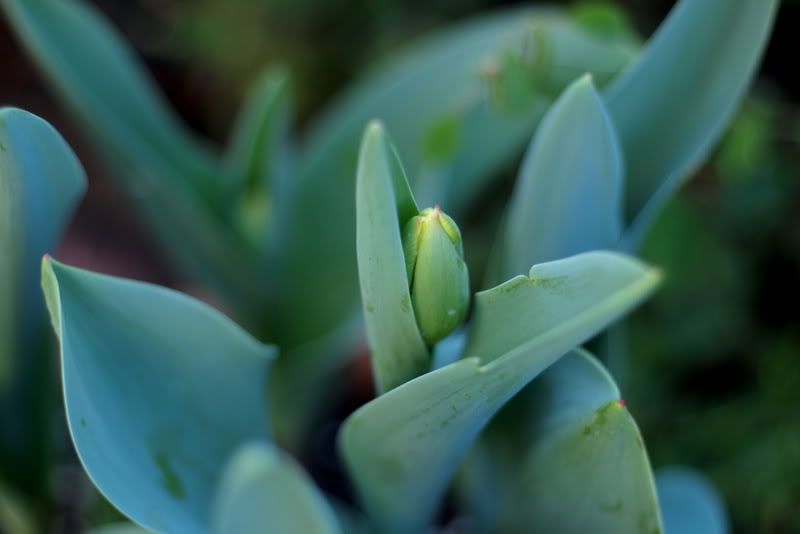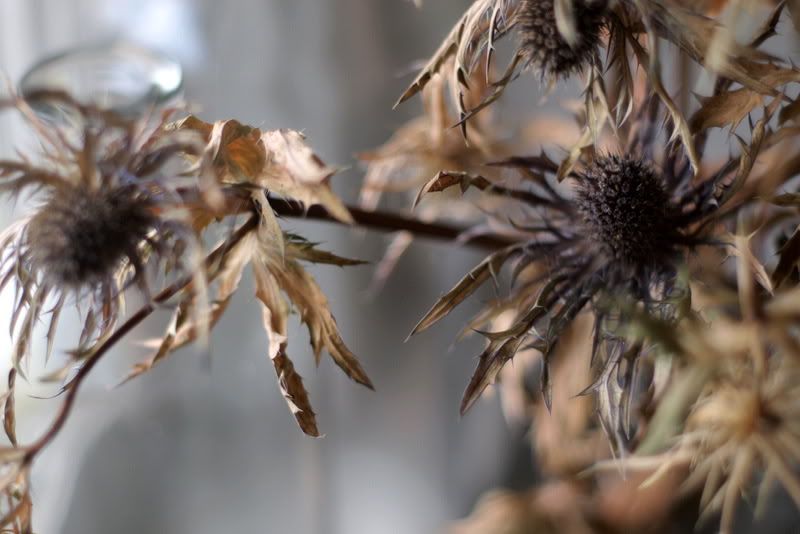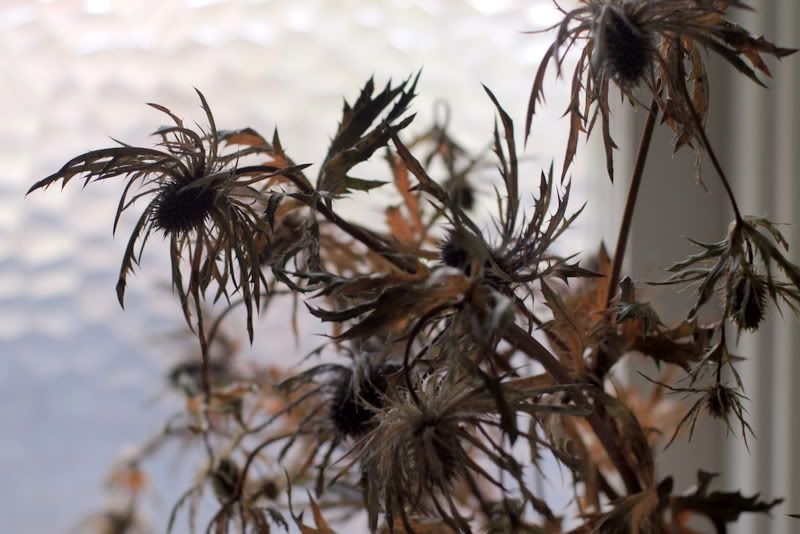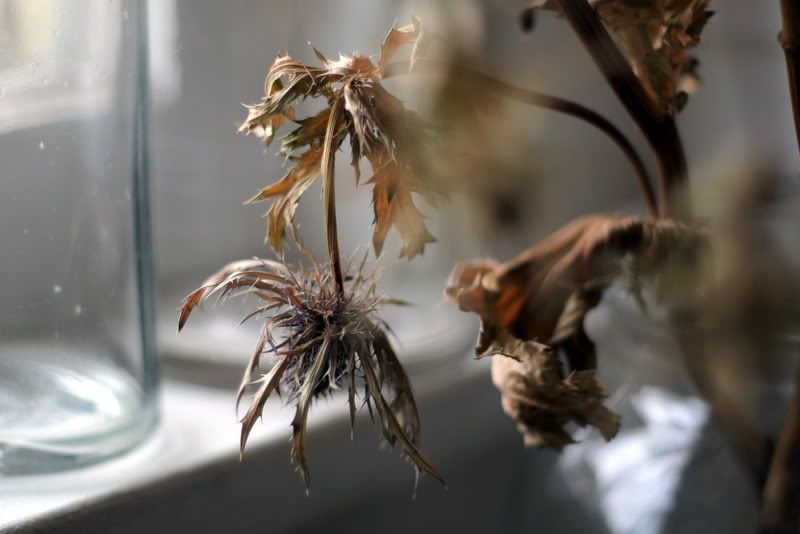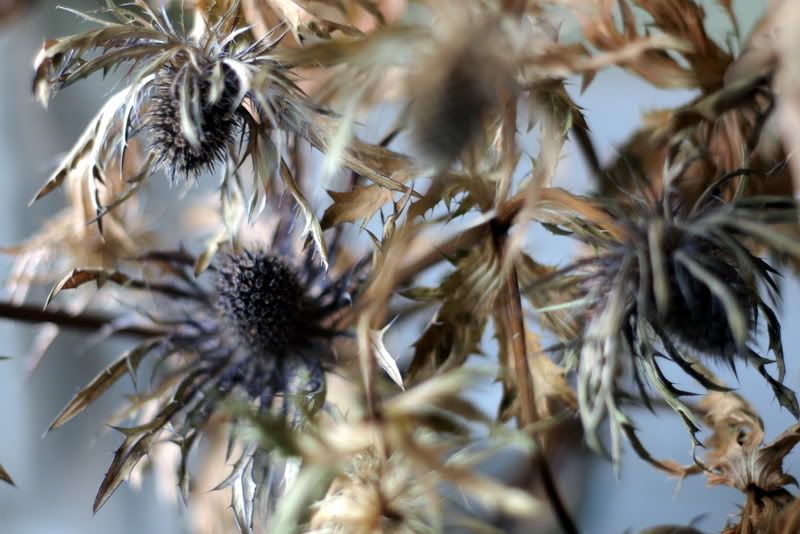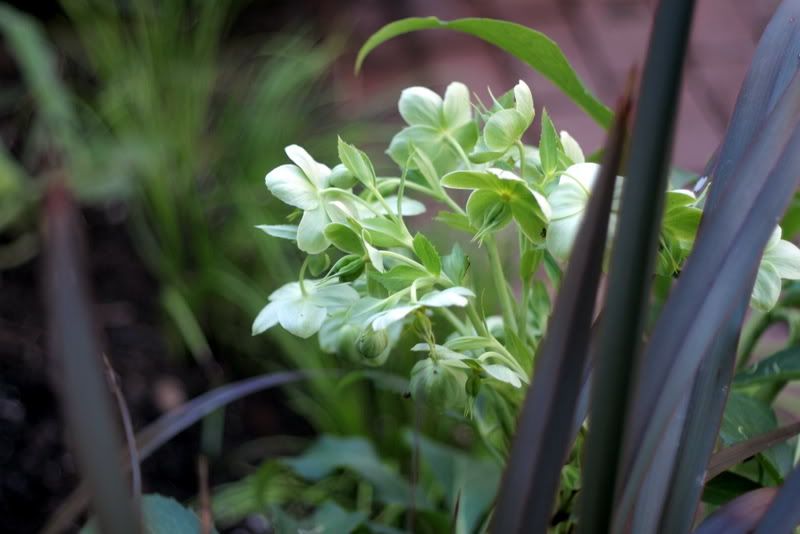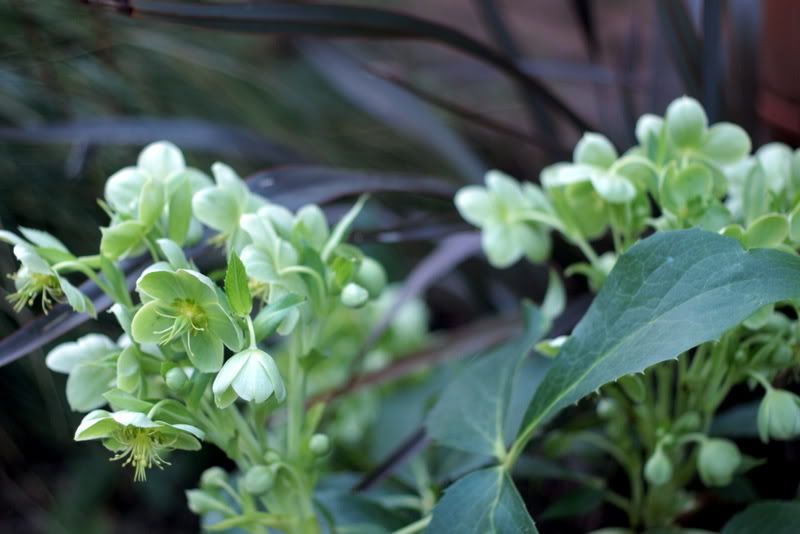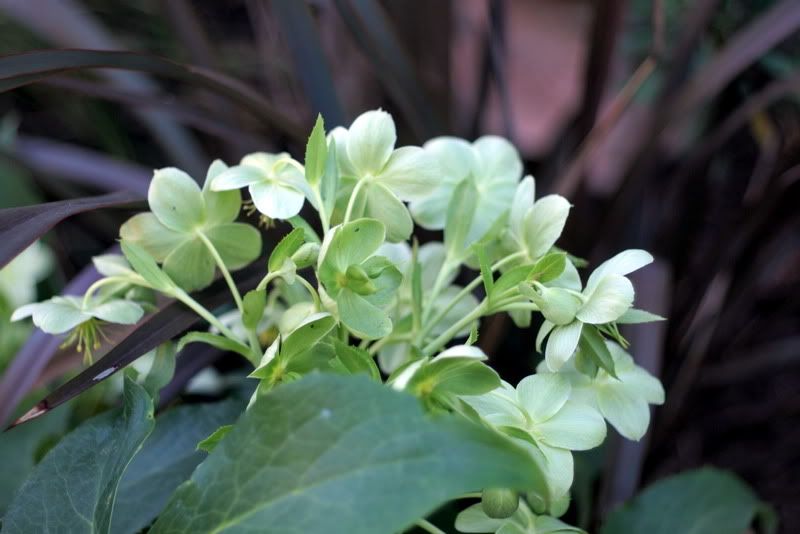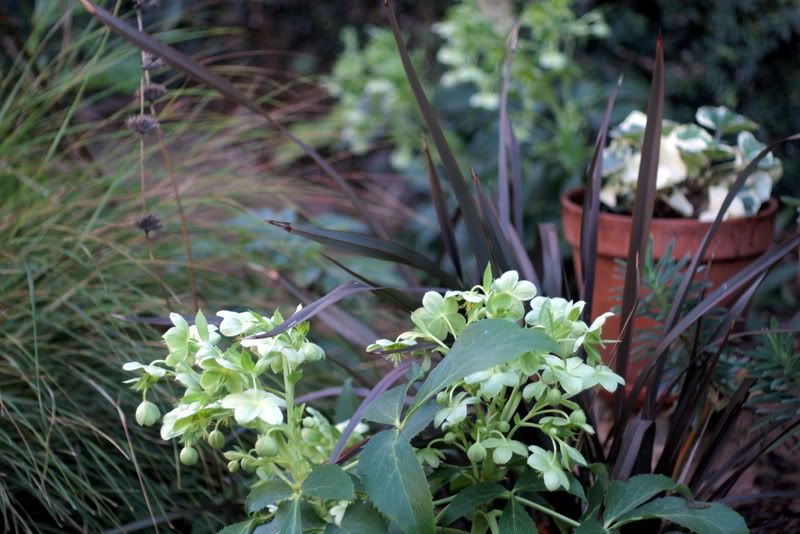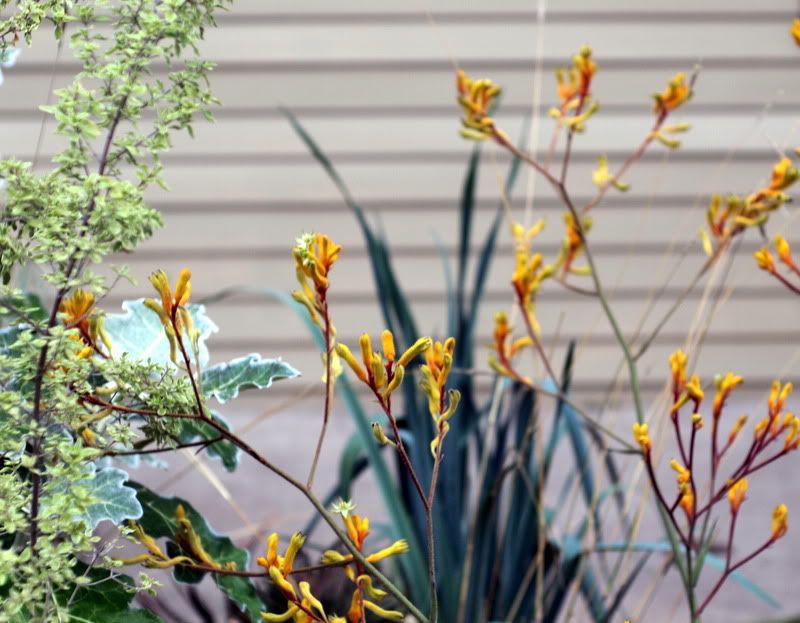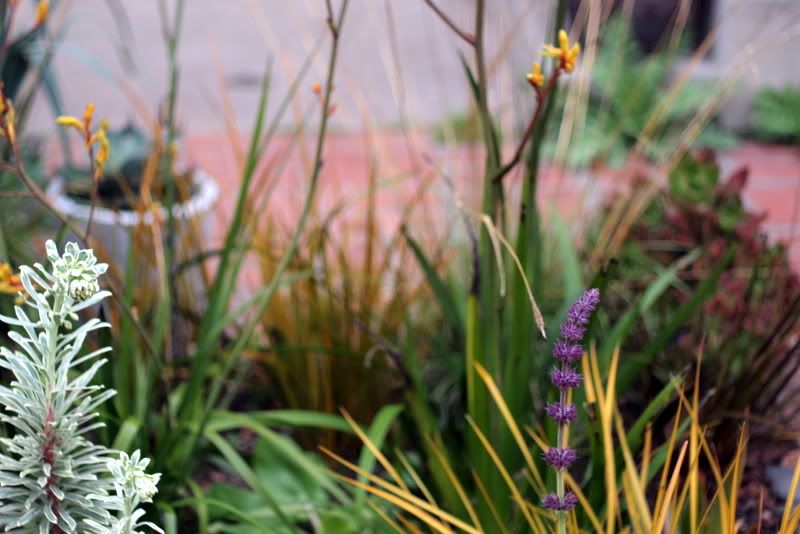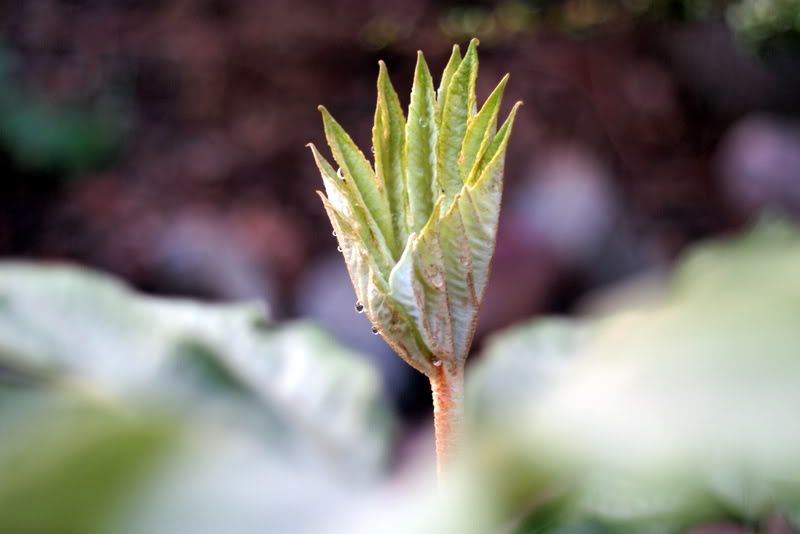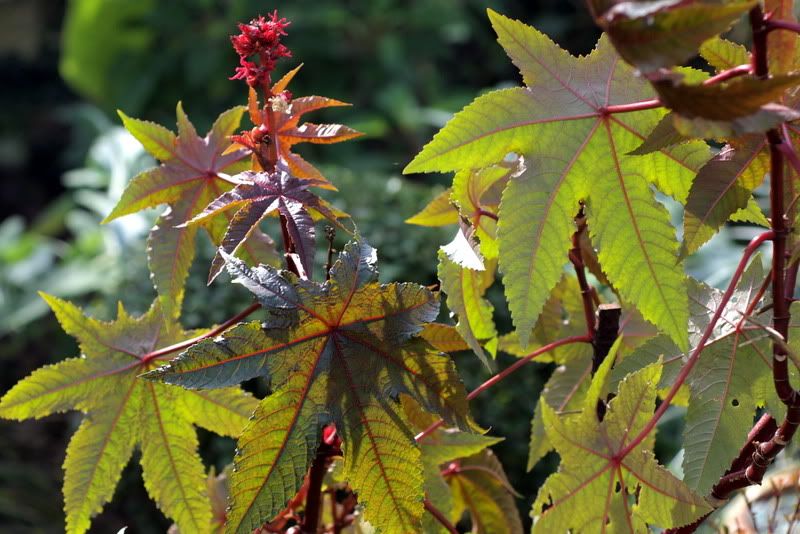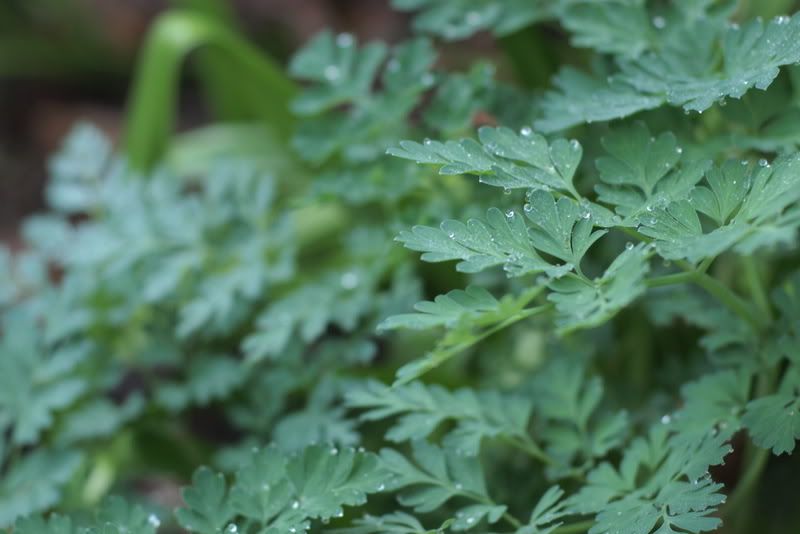This Salvia canariensis var. candissima from Annie’s Annuals is furrier than the species and has been incredibly difficult to photograph. Ever since I read a recent trashy news story on how beauties like Elizabeth Taylor and Marilyn Monroe shaved their faces of any peach fuzz for the camera (Huffington Post here), that photographic challenge now has some context and makes a little more sense to me. The dusky pink blooms and bracts have a similar character to Salvia sclarea var. turkestanica. I moved it so many times last year that it never bloomed, so have dedicated quite a bit of sunny garden this year to this salvia, which will inevitably become ginormous.
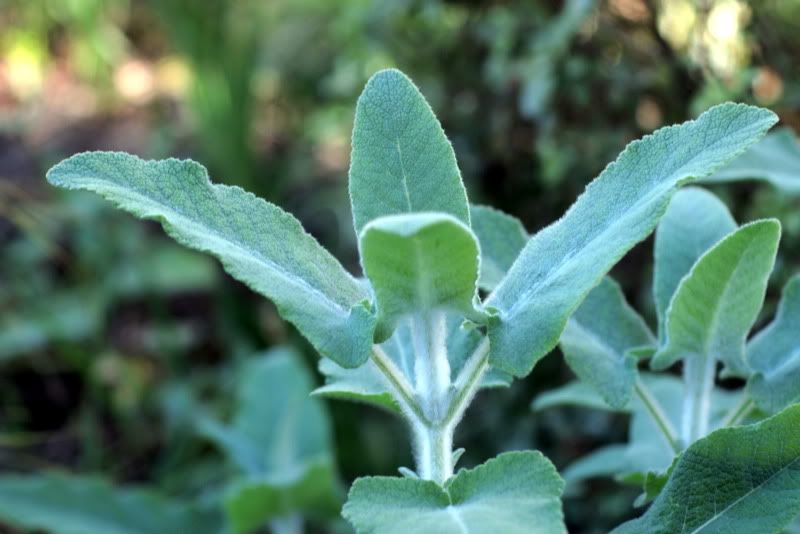
I’ve found extremely fuzzy plants difficult to capture, for example, as opposed to succulents, which practically photograph themselves.
(Unnamed graptopetalum.)
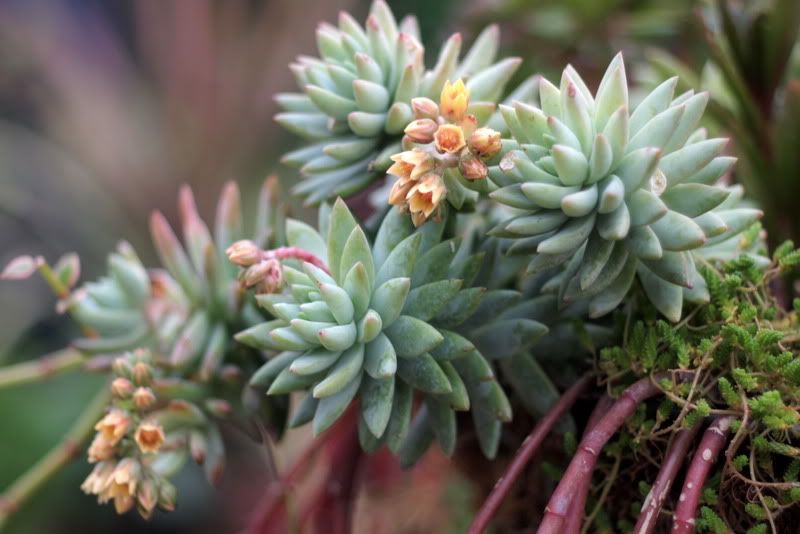
Ligularia tussilagenea ‘Argentea.’ This ligularia/farfugium would seem to be pushing variegation to an unhealthy extreme, with some leaves in total photosynthetic denial, possessing no discernible pigment at all.
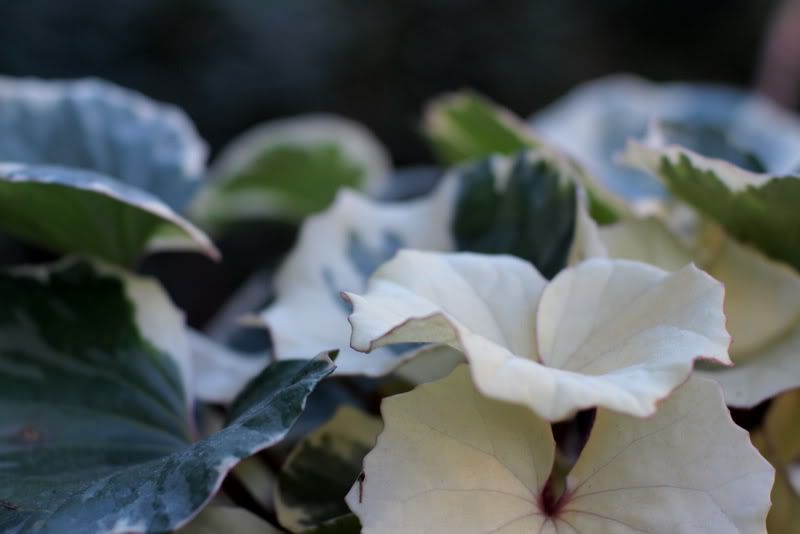
Brachysema praemorsum ‘Bronze Butterfly.’ Far Out Flora visited the Santa Cruz Arboretum’s Australian section and gives some background on this Australian shrub, which grows in my gravel garden among agaves, phormiums, grasses, and succulents. It’s past time for brachysema to be reintroduced to nurseries again. A tough, mid-sized shrub that never looks disheveled.
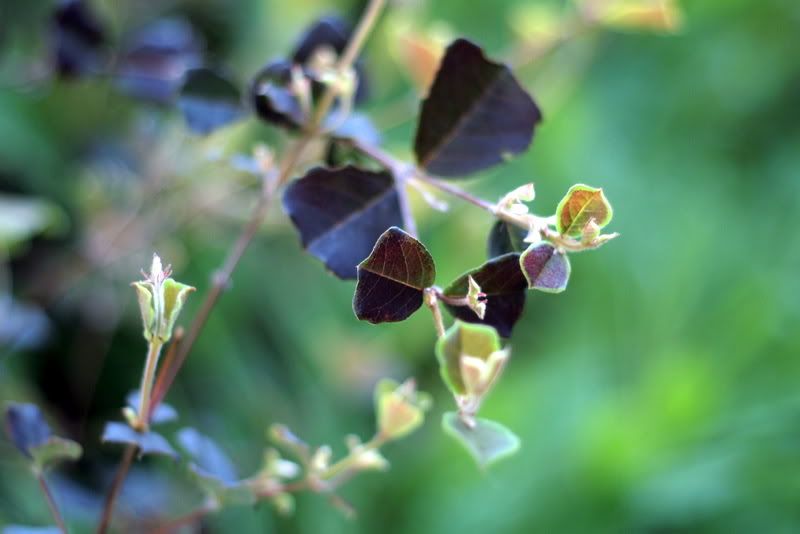
Melianthus major ‘Purple Haze,’ recently planted from a gallon.

I love the way this tetrapanax wants to join in the conversation, almost climbing into the chair to take a seat at the table.
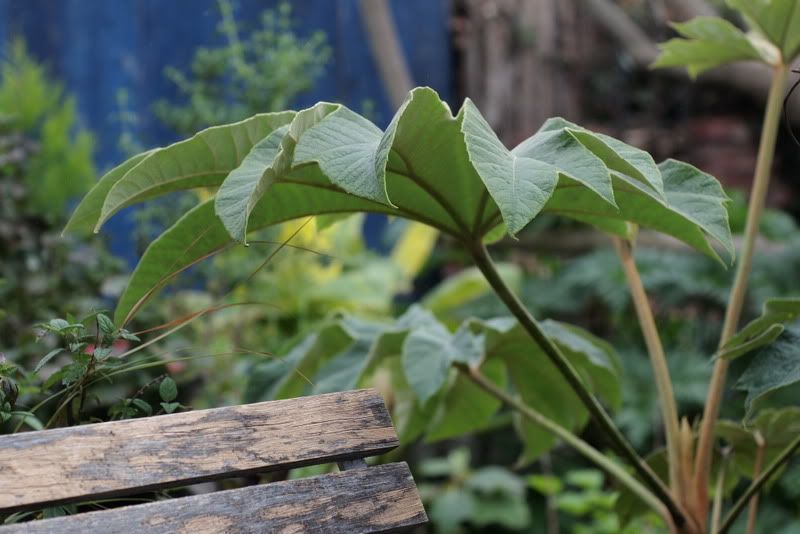
Euphorbia characias ‘Silver Swan.’ There are so many variegated varieties of E. characias now, it’s hard to recapture the excitement when the ‘Tasmanian Tiger’ roared into nurseries then pitifully mewed and faded away in gardens. This ‘Silver Swan’ has been a very strong grower so far.
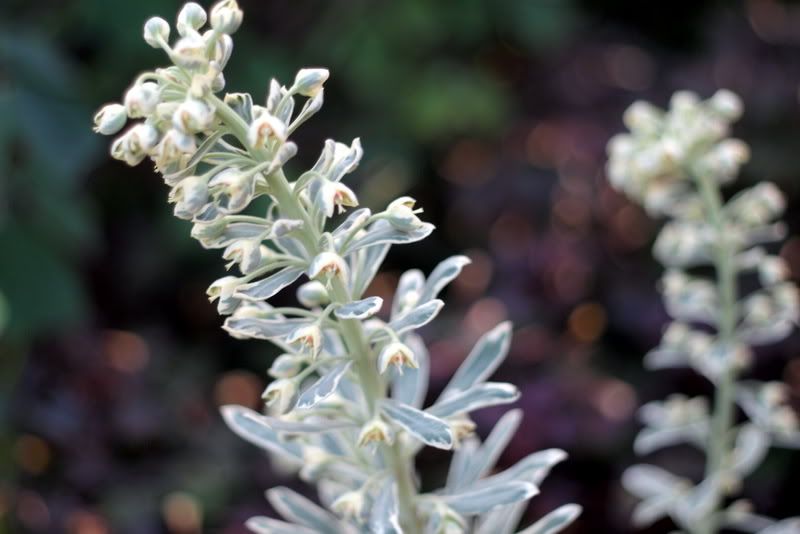
Pam at Digging hosts the Foliage Follow-Up on the 16th of each month. Branches and bark are welcome too.



